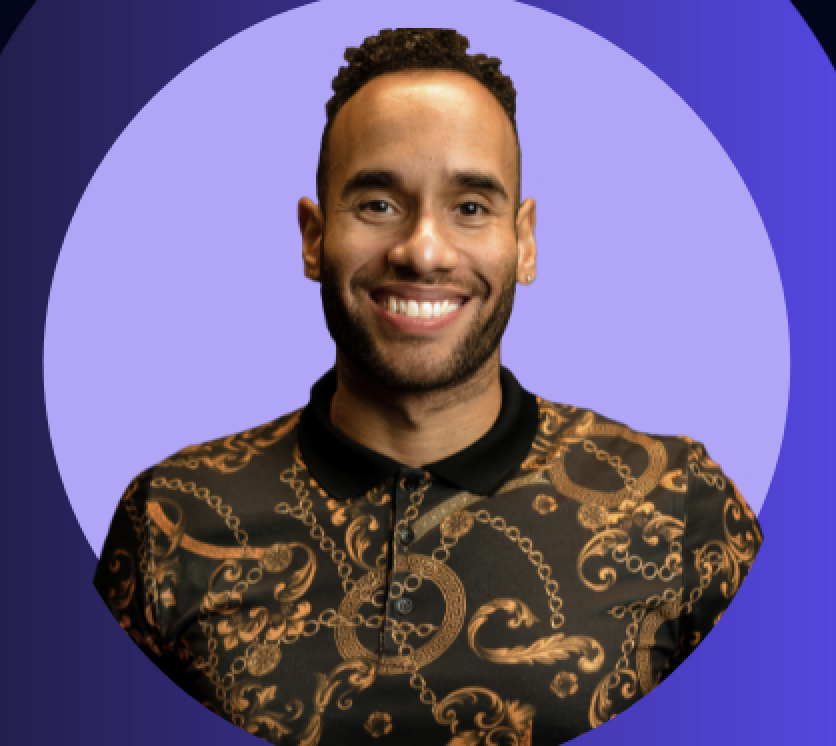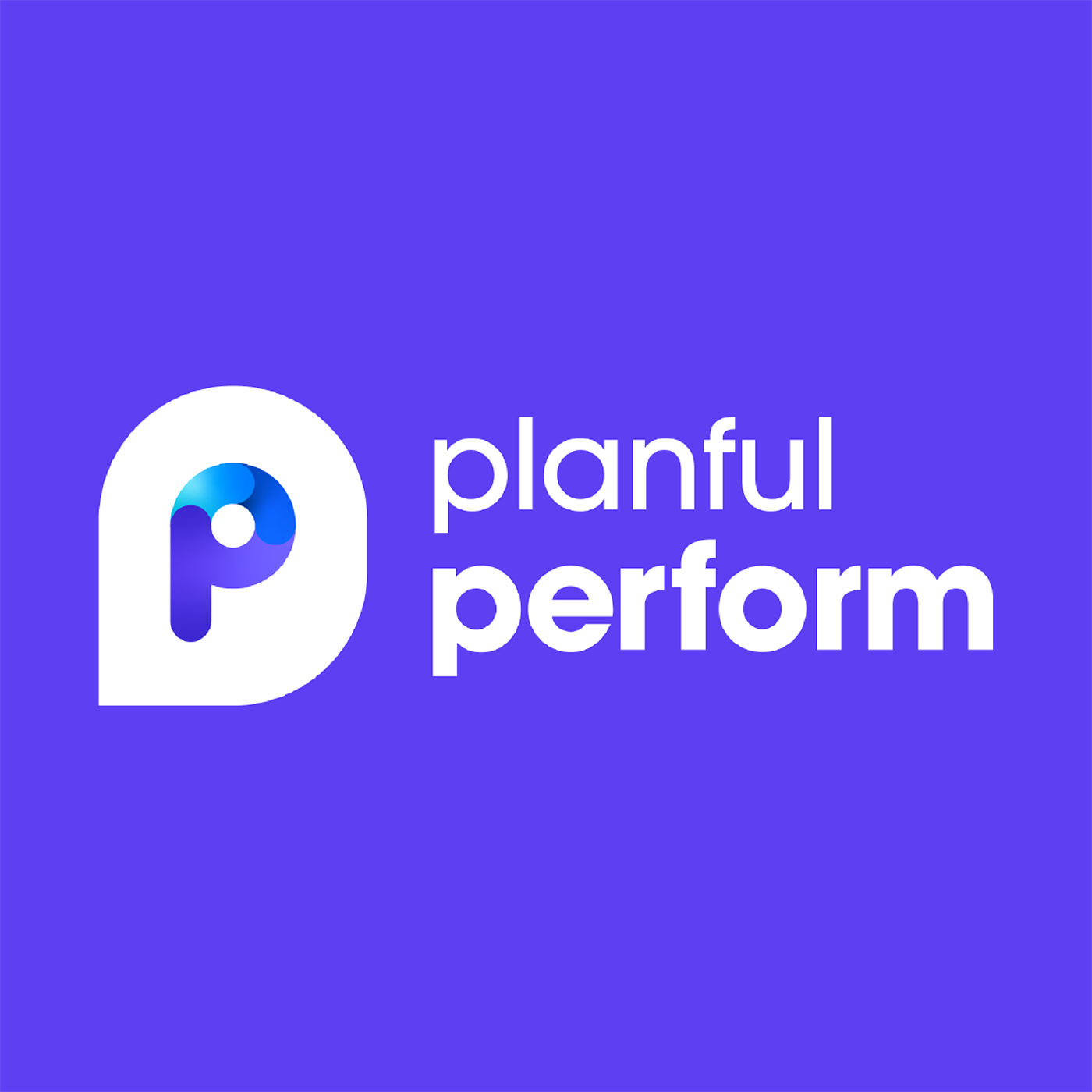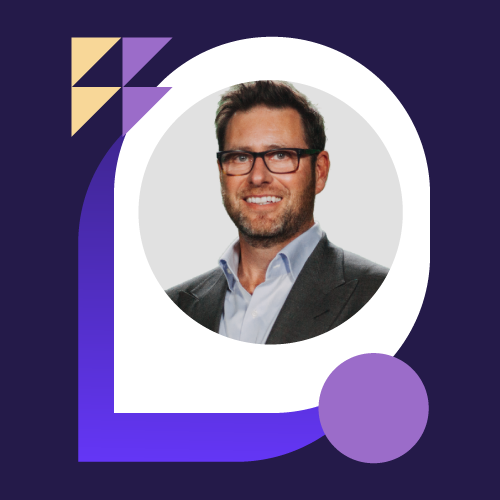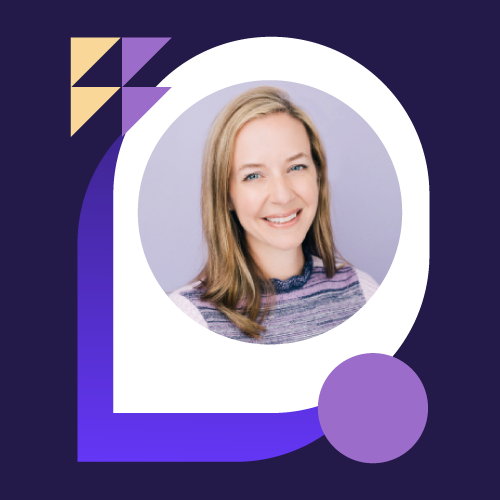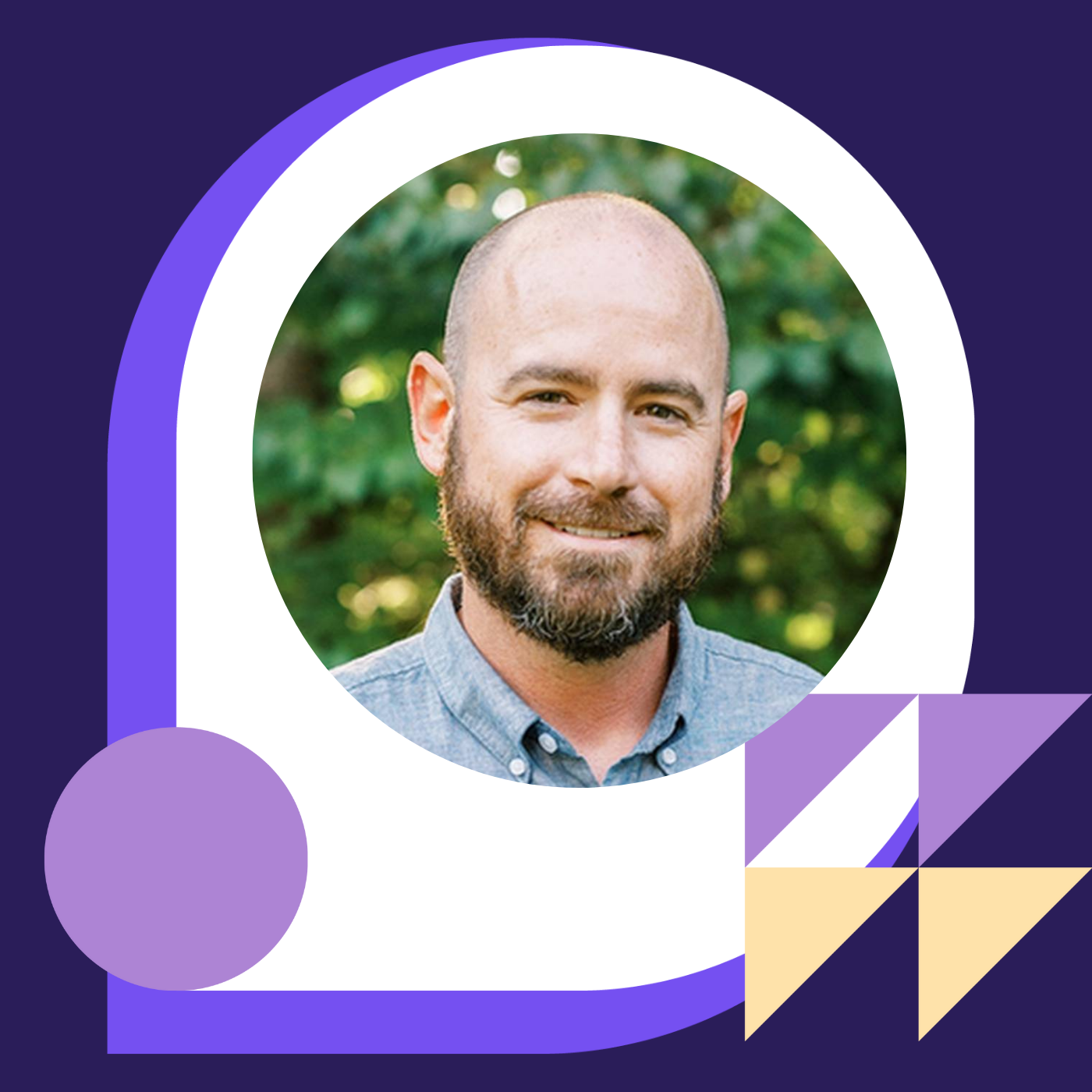FP&A AMA: Ask These Experts Anything with Glenn Snyder, Chris Ortega and Rowan Tonkin
- 0.5
- 1
- 1.25
- 1.5
- 1.75
- 2
Rowan Tonkin: Hi everyone. Welcome to a FP&A Tuesdays. Normally every Friday at 10: 00 AM Pacific, myself, Glenn Snyder and Chris Ortega, we get together and we host a live podcast. Today we get to do it here from the Planful offices. So, welcome gents.
Glenn Synder: Thank you.
Chris Ortega: Thank you.
Rowan Tonkin: Really excited to have you here live. We're going to do an ask me anything panel, which is always fun, we never know what we're going to get from the audience. And we've got our helpful team over here that are going to just quickly show us Q& A and things like that. So bear with us if it's not easy and we don't get to your questions. I see that there is always some interesting questions about recordings. So let me clarify. We will be recording everything from the session. We record everything here at Planful, and we will be distributing that as soon as it's ready with transcriptions and editing and making sure that we've got all of that done, it will be available online. And we will be communicating that out. As soon as these sessions are over. We are coming to you live, so getting them online, as soon as we're done is pretty difficult actually. So we had a question from Sarah Martin from your session, Glenn, that you just conducted, which was, do you have suggestions for how business partners can improve the FP& A function in their own work? someone who's not a manager?
Glenn Synder: Yeah. It's not so much about whether or not you manage people. It's really about how you interact with your teammates and your business partners. So, you don't have to be directing other people but you can still show up in a certain way. One of the things Chris and Rowan and I have talked about a few times on the podcast is really being proactive with those business partners, but recognize when you go out and you meet with your business partner, don't make it about you and what you need. Remember, you're there to support them, find out what their needs are, ask them about what's going on, and really understand their business so that you can be a better business partner to them. That's really, to me, the way that anybody in FP& A, whether you're an analyst or the vice- president, you could go over and help improve the function itself and your reputation by really engaging with the business.
Rowan Tonkin: I like that. We've got a question here from Michael, what are the pros and cons of embedding FP& A people within the functions versus being a centralized unit?
Chris Ortega: I love this part of it. And I think, when you're able to not have it centralized, but actually have what I call like FP& A minions inside of the organization, you actually level up the financial knowledge inside the organization. So one thing I really love about having a de- centralized FP& A perspective is that, say for instance, you have like an FP& A person that's fully dedicated to sales. They're sitting with the sales group, they're working through the operational plans. They're working through all the things, the sales processes, right? They're bringing that financial acumen, they're bringing that results. They're bringing that communication to the sales part of the business. And I think one of the gaps that having a de- centralized FP& A function is so good, is it levels up everybody's knowledge. The FP& A person becomes smarter in the operational unit, whether it's marketing, sales, client success and vice versa, the operational unit becomes successful in finance. They understand why it's important to have these kinds of contracts because it relates to this kind of revenue. So I think for me, having it be de- centralized is the best value proposition because you're leveling up the knowledge, the skills and the overall connection inside the business, to Glenn's point, it's all about partnership. And the more that we can connect and have our people in the business and learning the business, the better all the overall business will be. So I would venture for a de- centralized FP& A.
Glenn Synder: So I'm Going to take the opposite. crosstalk Shocker, right? Good TV. Right. So I look at it as, you got a couple of different things you need to weigh. First of all, if every business unit had their own FP& A team, do you have too many resources for FP& A? Because if you are a smaller organization, I think about some of the companies I was at, and I would have one FP& A person will cover three or four different divisions. But that means if you have each division has their own opinion papers, and you have three people instead of one. So you have that cost aspect. The other thing is sometimes finance has things that it does need to do. You get a lot of directive from the CFO, and if you are having a de- centralized model, you don't report under the CFO. You're reporting under that business leader who may want to see things in a different way. And so now you could have, I wouldn't necessarily say data integrity issues, but you could have different definitions for how they approach things because that business leader might say," I want my business to look this way, because I'm going to look better doing it that way". And that might not be the best way to consolidate things up. So really I think the best solution is having a balance. I think you need to have a strong centralized team, but having an analyst that might work well with those business leaders that can interact with the FP& A team as well. I think really that's the ultimate solution. But once again, it depends on your organization, your organizational structure and how much you really have for resources in the company.
Rowan Tonkin: Yeah. I can give some of my perspective here. I look after revenue operations, really closely aligned with finance. And revenue operations in the software industry is the summary of effectively sales operations, marketing operations, and customer success operations. And you can do that in many ways. You can just have a dedicated RevOps function, or you can create it as an aligned committee effectively. And both have their benefits, their pros and cons and so you kind of both, right? Like ultimately I think it's about, how do you deliver the best value service to rest of the organization in the most economical way possible? And both of those ways can actually work depending on the stage and the maturity of the organization. I think, I've certainly seen it in marketing and RevOps where, we'll create Revenue Ops and then we'll send it all back into the different functions and then we'll pull it back into a single function again. It happens all the time across companies, all across the world. Let's go back to a few more questions here. Christian asked, what are the biggest hurdles going from just reporting and planning to that truth thought partner status. And I'll let you start here Chris.
Chris Ortega: Yeah. This is a big shift. And I think a lot of accounting, finance, FP& A teams struggle with this. And one of the biggest hurdles that I think you have to get over is that value proposition that you have to that leader or to that manager to that person. Right? And I think the best way to get that hurdle right out the way is just come from a place of trying to understand their operations, right? Come and talk with them and say," Hey, look, I want to be your financial business partner to help serve your team". I think too many times people get it misconstrued. The business should not support finance, finance should support the business. That's really really key. So I think once you get past that hurdle of just saying," Hey, look, I'm here to support you. I'm not here to be the number police and crack you're across the Hay, when you went over budget". But to say like," Hey, look, like these are the things that I've seen in the business. Here's some things I can help. Here's some opportunities. Here's some challenges that you may face". I think that's the first one to get over is just that value proposition, because you may have that VP of sales or that VP of marketing that, their entire career, they just worked with finance and budgeting. That's all they did. That's the only interaction they ever had with finance. So breaking down that and just really saying here's the value, the skillsets, the passions and talents I want to bring to this partnership to help you grow and can ultimately serve your business. I think once you get over that, that breaks, that gets that trust element into it. And then you get the train rolling, a building a great business partnership.
Glenn Synder: Yeah. I think Chris just really nailed that. And it really to become a thought partner, think about people in your life who are thought partners, right? It could be your spouse. It could be your brother or sister, your mom, your dad, your best friend. People you go to because you value their opinion. Well, why do you go to them? Because you trust them. You know that they're going to have your best interest at heart. And that's really what that thought partner is really all about. So in order to go from," Here's your report, here's your budget variance and whack, whatever, you're over budget". Instead, what you need to do, is you need to talk to people about," Hey, I saw you're over budget. Let's start talking about how we can get you back in line. Here are a couple of things that I looked at your business that I think might help". And you start using that knowledge that you have in the information you have to proactively propose ideas and drive that conversation with the business leader. There, you might not get everything right. And most likely you're going to get a whole bunch of stuff wrong, but start the conversation, that's okay. And then what's going to happen is that business leader will look at it and say," Hey, that's really great idea. I like that". And now they're going to start to trust you more. They might throw more things your way. That's really how you have to build it up. And it doesn't happen in one meeting or in one week or in one month, it takes time. And you'll have to recognize that you can't just immediately jump to that trust level.
Rowan Tonkin: Yeah. I think the most important part about everything you both said is you've got to start with listening. You have to start from, firstly Glenn, from your session, you need to be in the room, you need to be at the table. So go and ask those people that you want to become thought partners with, to say," Hey, can I sit in on that meeting? Can I understand the strategy? Can I sit in on your weekly team strategy calls? And I'm not going to do anything, I'm not going to say anything. I just need to listen so that I can subsequently help" and then come and add value. And to Chris's point, that's when you are raising the financial IQ of the rest of the organization. And that's when you have the trust and become that thought partner. So we've got a couple more questions there. They're coming in thick and fast, which is great. Aaron asked, how do you create growth opportunities in FP& A when you're in a small company? So this is probably a really good one for you.
Chris Ortega: Yeah. crosstalk Right? I think, it's all I mentioned earlier, the value proposition, right? How do you create those growth opportunities? I think growth or a lot, that's a very loaded question because growth can mean different things to different organizations, different life cycles. You could be coming in as the first person in accounting, finance, FP& A, and a building it from scratch at a small company, which is some of the experiences I've had coming in and just being like the first accounting, finance, FP&A, and a higher growth for me was just about building the processes, building the partnership, right? If you're coming into a more established, a smaller company and maybe there's assistant controller, other resources, growth could be about how are you focusing on growing that talent and growing the platform aspects of it. So I think when you talk about growth at a small company, right. You really have to sit and understand what is that value proposition that you're going to bring to that smaller company, right? Is it being that trusted advisor? Is it the strategic partner? Is it the deep in the revenue side of the business? because you're at a small business and you want to grow the business. So you have to be focused on growth opportunities there. Is it coming into a smaller company that may have had an external accounting partner or an external accounting finance team? Growth in net is just moving it in house. So I think a lot of it is when you think about it at a smaller company, right? You have to look at those 6, 12, 18 months strategies that you really want to grow. And to me, I think any growth strategy for any high performance or partnerships, small to medium size FP& A team, four key pillars, people process, platform, and partnership. Find the growth areas in those. That's how you strategically roadmap it out the next 6, 12, 18 months, or where you want to grow and have those things evolving in that business. But it's really sharpening your focus on what growth means to that organization from a finance organization to look at. That is really how I answer that question.
Rowan Tonkin: I want to take a word that you just said there which was focus. And I think that's the hardest part, especially if you're in a small organization and you've got all this work that you have to do and you often find it hard to get to the actual high impact, high value work that you want to do. Many people just get, they suffer under, I'm just doing all this stuff. So one classification system that you may want to think about is looking at a 2x2 grid, right? So all the routine things that you do and then all the cognitive things that you do. And then on the other line of the grid, look at what is cognitive and what is something that you can automate. And really start in that bottom left- hand corner and try automating a lot of the work that you have to do, some of that could be accounts receivables. There's plenty of technology out there that can help automate that. And if you're stuck in a world where you're managing journal entries and doing things like that, and that's keeping you from the high impact high value work. Well, you've got to go and fix all the things that are preventing you from spending time there. So think about all the work that you can do and try and automate what you know is like, whether that be weekly reporting, try and get that as efficient as possible so that you can use your time on the high value and high impact things. All right. We have a question from Sarah, how do you juggle over communicating with stakeholders who get too much email or are hard to reach? I am one of those, who get way too much email. I'm also very hard to reach because I'm in meetings all day. So here's my system. If you don't need it today, send me a slack. If you don't need it this week, send me an email. If you need it urgently in an hour, send me a text. If you need it right now, call me.
Chris Ortega: That's pretty solid, that's pretty solid.
Rowan Tonkin: But that's just my system. And my team know that, I've communicated to my team, how I like to work. I think that's the answer from my perspective, Sarah, figure it out what that executives' preference is, or those stakeholders preferences are, because they may have systems in play that you don't know about. And you just need to ask, but a whole lot of challenge.
Glenn Synder: I'm, so first of all, Rowan, absolutely. You have to understand the executive that you're working with and making sure you're working within the way they want to work. Personally. I always like to make sure I have at least a 30 minute meeting on everybody's calendar that I need to meet with on a monthly basis. That is a set time that's there. Now, sometimes that meeting has to move fine. You got to be flexible, but make sure you have set time that you could go over and talk to that business leader and that it's on their calendar. And hopefully if they are getting value out of it, they're not going to be pushing that meeting around very much. So really schedule the time. You're not going to, if you're constantly pinging somebody with emails and especially if you're asking 15 different questions and you're sending 15 different emails, you're going to get no response probably, right? If you ask 15 different questions in one email, you can get one of your questions answered. So the best thing to do is to make sure that you are really asking the question that needs to be asked. So you get the bulk of what you need, but make sure you have that set time so that you can take in a 30 minute meeting, 15 minutes of that meeting should be about you and your questions and what you need from that business partner, and 15 minutes of that meeting should be using to the business partner. What else can I be doing for you? What do you have on your plate? And how can I help? And the more you drive value for that business partner, the more they're going to be responding to your emails and taking your meetings and answering your phone calls.
Rowan Tonkin: Chris, you went through an acquisition recently, and I imagine that was a pretty busy time for your executive team. How did you get their attention on things that you needed to drive the business today?
Chris Ortega: I loved your point Rowan, where you're talking about like, what is the best communication style? I think when you're a high performance, high motor FP& A person, there is no one- stop shop for each executive. So for me, I wanted to make sure I understood what is important for me to cascade, what's the urgency and importance of it. So that's how I look at things, right? If it's important and urgent, then that's something that's a type a priority and I communicate that to the executive and say," Hey look, I know you may have things, but this request I need from you is important, urgent. Can we find some time to get this on"? Right? I think another one is, that style that they like right? Is you can't just have one based approach for every executive. Some of them are emails. Some of them are texts. Some of them are voice notes that you, I've even had like people send voice notes to just like, Chris has sent me a voice note with the key highlights of what it is and I got it. So I think it's really understanding what is the most effective way of communicating and like, what does it need to be communicated? I think sometimes like we sit back and just like, we need to tell everybody everything. And sometimes there's things that are just like," Hey, this doesn't impact or have a broader perspective. So I'm going to keep it, our I'll cascade it in another avenue or, send it a different way to be able to do it". So I think it's really understanding and like, it's configuring your communication, not customizing. Customizing gets real challenging because when you start having like custom communication for all the business leaders that you support, that gets challenging. So you want to configure your communication approach. You want to configure and communicate your prioritization to the style that's most conducive for them to communicate. I think that's the best way to do it.
Rowan Tonkin: Yeah. I would echo that and I would say, learn the habits. Right? I know the best time to get my CEO's attention is in the afternoon, but Kimberly, our chief customer officer, you get her in the morning, right? She's just having six cups of coffee in the morning and you know that, that's when to share information. So learn people's habits because, if they are in a commute, in a long commute, maybe they're not doing that right now, but they might like taking calls in the car on the way home. That's what I do sometimes when I'm driving here to the office. So learn people's habits. The next question is here from Cindy, and Christian I will reiterate the 2x2 matrix for you in just a moment. But next question here for Cindy, from Cindy, is what is one of the biggest mistakes you have made as an FP& A leader? We did a whole podcast crosstalk.
Glenn Synder: You want to go or you want me to go?
Chris Ortega: I jumped right into this one. I think the first critical mistake that I've made and learned from was making the leap as a FP& A individual contributor to an FP& A leader. Right? And the mistake that I made was that, getting the wins, getting the successes is actually coming throughout my team and not through myself. I struggled with that. I struggle with it. And the reason why I struggle with it is because most of the time in my career, I was so used to getting those wins and those quick hits, it was like a dopamine hit where I just like," Man, I knocked this out the park, I did this, I did that. And I did this". Once you go over to a leader, the whole value of everything is we, us, them, the spotlight is on them, and I struggle with that. And for me, a part of the way that I learned from myself is that it's like, the wins are going to come through the people that I empowered, the projects that they get to do, the opportunities for them to broaden outside of their comfort zone, the knowledges that they get. So I think for me, that has been no doubt, the biggest mistake that I made as an FP& A leader, it wasn't like a depreciation forecast that I missed by like a million dollars. Cause I've done that before. I've done that, but no, it's definitely on the people side. And traditionally, that is where that leap, I seen really really talented FP& A people just completely kamikaze their career because they don't make that leap that it's not about you anymore. It's about we and us. Not about I and me.
Glenn Synder: Yeah. The funny thing is my biggest mistake was almost very similar because it's really, you get to a leader as you're a leader, your mistakes aren't about the data anymore. It's not about whether or not your balance sheet balanced. I mean, okay that's important. Don't get me wrong, but it's really about how you interact with other people. And the biggest mistake I ever made, which was one of the best learning points in my career was I was just like Chris, I was, I loved solving that problem. And I knew when I had a great answer, I was like, yeah, I nailed it. I'm like, here you go, this is it. Except for what happened was I didn't bring other members of the business along with me. And all of a sudden they saw me as someone who is trying to show them up with my results and make them look bad, which was not what I was trying to do. I was just trying to say," Hey, here's a great solution". But because I presented it on my own without bringing them into the fold, I ended up alienating them. And I didn't realize that what I should have done is gone to each of those business leaders and said," Hey, here's what I'm thinking. What do you think? Do you agree?" And then once I got the, buy- in, presented that back to the CFO and saying," Hey, talk to everybody. We are all on the same page. And this is how we think we should move forward". And that was just an incredible learning experience for me. It wasn't a great personal experience because I got chewed up by my boss, but it is really one of those things that you have to recognize. And I talked about it a little bit in the session, right before this. You're part of a team. Nobody is successful on their own in these kinds of environments. You have to recognize that you are part of a team with other people and give them the recognition and the input. And when it comes to failures, you also, that's when you raise your hand and say," Yeah, that's on me". And especially as a leader, the last thing you want to do is say, well, that wasn't my fault. That was this person over here who reports to me, because at the end of day, you're responsible for that person. You got to own those things. So, good learning experiences I had in my career. Yeah.
Rowan Tonkin: Yeah. It's funny. Both of you. So I have an executive coach and he wrote the book on self- leadership, literally the book is titled self- leadership. And anyway, one of his, one of the pages and topics in the book is, what's the biggest mistakes of leaders. And the biggest failure is too much winning because what happens is, generally like what you described, Chris, you've been such a great individual contributor that your first failure is that you're so used to all the glory yourself, and you just fail at being a leader because you haven't recognized that it's no longer about you. And so really interesting there that you both kind of talked about that's the real challenge for leadership. Christian I'll quickly read it, right? That 2x2 matrix, it was actually from the U. S. Census Bureau, and on the bottom of the grid, you put out all the routine things. And then the second side of the grid is non- routine, right? And then on the left side of the grid, you have manual and then cognitive. So things that you have to think about. So you want to spend as much time as you possibly can in the top right of the grid in all the non- routine and cognitive things, right? Scenario analysis. What if analysis. And in the bottom left of the grid or all the routine and manual things that you do. And that's like, every week I have to send a sales forecast, well, I use a slack bot to do that for me. I just know that I've got to get it done by 10: 00 AM. And the slack bot sends it that until grant that I use a slack bot, but that's what that grid is. It's a really good way of classifying all your work and try to figure out what do I need to free up in this bottom left hand side? And how can I do that? And actually it's a really good thing for trying to what you need to cost contain in your business. Cause that's on the edges there of in between all of those areas. That's where you start to think about offshoring or using contractors and things like that. So, Michael I'll answer this quickly. We have a CPA credits available for all of our training courses, from this event we're not doing CPA credits. So if you're looking for CPA credits, go follow all the Planful training courses. And that also leads me to the answer for Will's question, which is how can I get Planful certified, reach out to academy @ planful. com I think, and you can get a Planful certified there. There's amazing training courses. The team are doing a great job of doing all of that online now. Lily, how do you suggest a small FP& A organization using Planful to explore fuller use of Planful as the organization grows. Glenn, two time customer champions club member. You've got to be the right guy. crosstalk
Glenn Synder: Well. So, you got to think about where the company is going, right? So if you were working on, okay, here's what we do today, you're not going to get there and you're not going to be able to scale the system in the right way. You got to think about what's the next question. What's the next thing that we're going to be doing? What are we going to be doing three months from now, six months from now, a year, 18 months, two years down the road, and start building those processes if you can, because one of the things, and as Rowan mentioned, I've used Planful at multiple companies and Planful has one of the best customer support networks that I've ever seen. And what's really great is I did a lot of brainstorming with them. I would call them up and say, I'm thinking about this. I'm thinking, this is where I need to go. I need to have this model that I'm doing in Excel. And I need this to be connected into the data. And I'd love the model to be in Planful. How do I do it? And then you start, set up some brainstorming meetings we are working through and coming up with what that solution is, because the best way to scale your business and using a very small FP& A team is to leverage the resources of Planful to help you out. Thanks. And that's it, recognize that you don't have to do everything on your own. You've got a team of experts who are more than happy to take your phone calls and your emails to schedule calls. You got your success partner. Talk to them, get their ideas, because as much as you think you are an expert, I promise you, the people working at Planful and know the system a little better, get their insights. They're going to think of things that you never even thought of. And I can tell you we've come up with solutions in ways that I was like," Ooh, we didn't even know that existed. That's great. Let's go that path". And just having that proactive conversation with Planful and really leveraging them as a partner.
Rowan Tonkin: Yeah. I would say to that point, your customer success manager is the key that it's literally their job to make you successful. That's their job title. And we call them customer champions for a reason. It's our core value here as a company. And we want you to get the full value of the application as well. And so, once they get aligned with your goals, your needs as a business and where you're going, that may be looking at rolling out workforce planning in a specific way or," Oh, it looks like you're going to do some M& A, well consolidations will be a really good thing for you to do, but reach out to your customer success manager and they'll help you get the best, the most out of the application for you. Do we have any more questions, any questions in the chat I can see, I think we've answered most in the Q& A. Brian Kailash, he asks any suggestions for RPA software. Well, I know it's worth a lot of money cause Solunus raised a billion dollars. That's pretty, I don't know what you do with that amount of money.
Chris Ortega: It's a monopoly.
Rowan Tonkin: Anyone?
Chris Ortega: Yeah. I mean, there's a host of tools out there around RPA. RPA is our Robotic Process Automation. So robust process automation. It's all about that grid that Rowan was talking about to automate as many manual processes. Where I've seen a successful is really on those manual high data, high frequency processes that you do typically around AP collections, AR bills, travel expense management. It's really about leveraging those tools to not have people in the details of an expense report, but have these tools and technology from an RPA perspective, help automate that to not actually make the decision, but get it to a point to where you can have people review before it gets to your GL. So it's really about re- purposing and rebalancing the human element to focused on those high value activities that we talked about, the communication, the collaboration, the connection, the partnership, and not have them in the details. So I think for me, some suggestions around those tools are definitely around. Like I said, the AP, the collections, AR side, collect AI from an AR perspective are some other solutions out there. But those are really the areas that you see RPA having a value proposition for accounting, finance, FP& A because those functional tasks and responsibilities are very manual and labor driven.
Glenn Synder: I'll make another plug for Planful here, with their predict models too, the fact that here's a system that can now go over and identify particular variances for you. I mean, in FP& A the numbers come out while you're doing, you're putting a budget together or you just doing a monthly budget variance report. You got to look through that report. What are the numbers that pop to you? That don't look right? They say, oh, I got to go and explain that. Well, now you have a system that can go over is call it out for you. Yeah.
Chris Ortega: That's huge.
Rowan Tonkin: Yeah. Tracy asked the question here, do we have a practice site where you can try and create some reports while not in production? Many of our customers have Sandbox environments Tracy, and also go and reach out to the training team. There's plenty of ways of creating reports. Christian asked around, I think we only have time for one more question, by the way, coming from a very ExceL centric organization. I think that's every organization.
Glenn Synder: Pretty much
Chris Ortega: Nobody uses Google Sheets.
Rowan Tonkin: Love my Google sheets. How do you get people to truly understand all the hindrance that entails? And how do you get the buy- in for implementing a system such as Planful? Christian, I think, I'll give a really short answer here, which is, Grant said it in today's keynote. Excel is an amazing personal productivity tool. We all love Excel. It's got so many benefits. It's very interactive, it's easy to use. We all know how to use it. There's a low barrier to adoption there. The biggest challenge as you get outside of ExceL and you get too big for that, is the collaboration, connecting to multiple data sources and then the security and the role governance and the data security that you need, especially in this environment where everyone's working from home. You don't want to be passing spreadsheets back and forth. The important part about a system such as Planful is you can still work in Excel and it all connects back into the system. So people don't have to leave their environment. You can actually just use ExceL there and everything connects back ends. So
Glenn Synder: Can I just add one thing to that is, you want to go over and leverage and use a system like Planful. So you say, I don't need to go and hire five more people to go do all of this stuff that really could just be at the push of a button. And that's the argument you make to the executives and say," Hey you know what, I need X amount of money to go and do this. Because if I don't do that, I'm going to be spending 3X on hiring new people". And then you still have manual errors that come up because it's not automated. And any time people are great. They're great to work with the great to interact with, but people make mistakes. And not to say the system can't make mistakes, but if it's programmed properly has vetted the chance of getting a mistake as much lower. So really that's the value that you want to drive is to say we could be faster, more efficient, more detailed, and you're going to spend less money. If you could make that argument to your executives, they usually buy- in every time.
Rowan Tonkin: All right. Well, gentlemen, thank you so much. This was fun to do our first podcast in- person alive here from the Planful media studio down in Redwood city. Thank you both for coming in. Really appreciate it, Glenn. I know it was a really long commute from you.
Glenn Synder: You. Yeah, it took me 10 minutes door to door to get here.
Rowan Tonkin: All right. Thanks everyone.
DESCRIPTION
In a free-form Q&A format, experienced leaders in FP&A, corporate finance, and corporate strategy will discuss FP&A best practices from their different perspectives. Although they may not agree on everything, they’ll dissect common FP&A issues in terms you’ll understand and with tips you’ll be able to immediately put to work. From hiring and forecasting, to business partnering and executive presentations, come with your questions and leave with a better view of FP&A.
Today's Guests
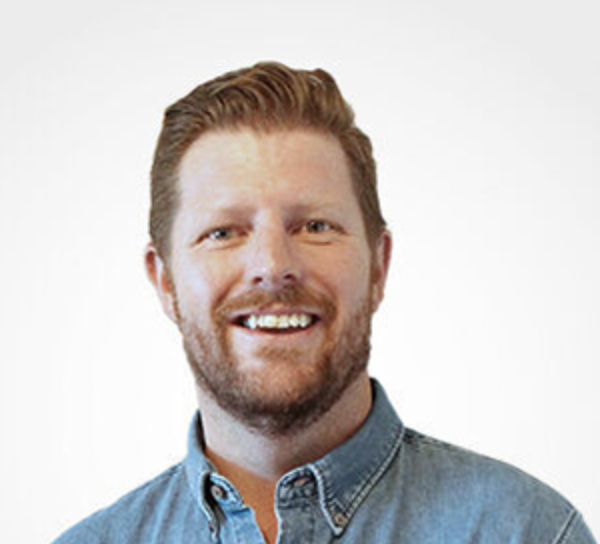
Rowan Tonkin
Glenn Snyder
